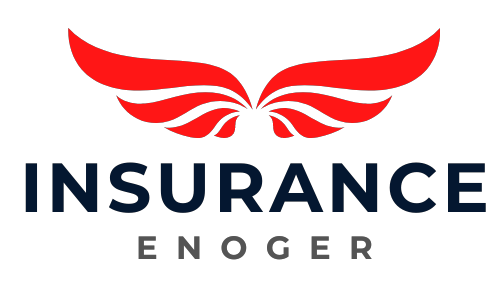Embarking on a home renovation project can be an exciting journey. Whether you dream of a sleek, modern kitchen, an additional bedroom, or maybe an outdoor oasis with a new pool, the visions of what your home could be are endless. But in all the excitement of choosing tiles and fixtures, there’s one factor that often gets left behind until it’s too late: how these renovations will affect your homeowner’s insurance. In this article, we’ll discuss the more hidden, but highly effective, insurance costs-one of which may just surprise you if not taken into consideration before you start swinging that hammer.
Increased Dwelling Coverage and Premiums
When you renovate your home, you are not only making it look better or more functional; you’re also growing its value or the cost of rebuilding it. And that is where the whole concept of dwelling coverage comes into play, quite essentially. Dwelling coverage is a part of your homeowner’s insurance that pays to repair or rebuild your home if it’s damaged by a covered peril, such as a fire or windstorm.
The thing is, anytime that you’re adding square footage, upgrading to higher-end materials, or making serious structural changes, you’re effectively making your home more expensive to rebuild. This means you will want to increase your dwelling coverage to reflect such changes. And an increased dwelling coverage almost directly equates to increased insurance premiums. For example, replacing your roof with a high-quality, impact-resistant material will surely reduce some future claims due to weather damage, but at the same time, it will increase your insurance costs initially because the replacement value just went up for your home. It is wise to get in touch with your insurance agent before you start the project to get a ballpark figure of what this might mean for your premiums.
Liability Coverage Adjustments
Certain renovations by their very nature are going to elevate the liability risk regarding your property. The classic example would be adding a swimming pool or a large deck. While these can greatly enhance the desirability of your home, they also bring along with them new liability potential for accidents or injuries on your property. For example, a home extension that adds significant square footage will not only enhance your living space but also increase the replacement cost of your home, necessitating an adjustment to your dwelling coverage.
Liability coverage under your homeowner’s policy is designed to protect you in case someone gets injured on your property and decides to sue. With new additions such as pools-which are technically “attractive nuisances”-you’ll want to increase your liability coverage. That will raise the premium accordingly. Some insurance companies may also require certain safety features, such as fences around the pool area, before extending coverage. That could be an added cost in your renovation budget. Always discuss these changes with your insurer to avoid being underinsured or facing claim denials down the line.
Contractor and Construction Coverage
While your home is under renovation, it’s more vulnerable than ever. The risk of theft, damage, or accidents increases significantly with all those extra materials and workers around. Standard homeowners insurance might not cover everything during this phase, particularly if your home becomes uninhabitable during the renovation process.
That’s where builder’s risk insurance comes in. It’s a specialty insurance policy for construction renovation or building-covering materials and tools, and sometimes the structure in question while it is under construction. You may want to look into this kind of protection when you’re facing huge renovation projects. However, remember this adds to your costs: both in the premium you pay, probably, and in the management of multiple policies. It’s a layer of protection that may not be necessary for minor updates but becomes necessary in an extensive project where your home’s integrity is at stake.
Temporary Relocation Costs
If your renovation is going to make your home uninhabitable, you’ll want to consider where you will live while the renovations are taking place. Not all homeowners policies would pay for ALE during a major renovation unless the unlivability is because of a covered loss, like a fire, rather than due to the renovation itself.
If your policy does include ALE, review the limits since they may be inadequate to maintain your family at hotels, three meals per day, and so on for a lengthy period. You may wish to supplement the policy or make plans for an out-of-pocket expense when coverage is less than adequate. This can help you budget appropriately for this or look into temporary housing options that fit within your policy’s ALE coverage by discussing this upfront with your agent.
Mitigation Reduction of Premium
Not all changes to your home will result in higher insurance costs; some can reduce your premiums. Installing a new, impact-resistant roof, upgrading your electrical system, or adding a security system can lower the risk of claims, which insurers love.
These types of upgrades might qualify you for discounts in insurance. A sort of silver lining, where investment in safety and durability pays back in premium savings, is nice to have. However, these savings are never done automatically; you have to proactively let the insurance company know about such upgrades. Your home’s risk profile gets reassessed, and that may very well mean better rates. You will find this to be one of the aspects when positive and candid communication with your insurance can directly pay off in your pocket.
Documentation and Communication with Insurer
Undeniably, one of the most overlooked precautions regarding insurance and home renovations deals with proper documentation and communication of those changes to your insurer. Failing to update your provider regarding major house changes can void a policy or result in claims being denied.
When you begin a project, document all of the work accomplished, material receipts, and alterations to the structure and systems of your home. Share the same with your insurer subsequently. That way, you are not only keeping them informed about the updating of your coverage, but you also have proof of your case in the event of a claim being filed. Failure to update your policy could result in underinsurance and potential financial disasters in the event of a disaster.
Specialty Coverage for Unique Additions
If your renovation involves unique or high-value additions such as art, custom fixtures, or specialized architectural features homeowners insurance alone is probably insufficient. These items might require additional endorsements or even standalone policies to ensure they are properly covered.
For instance, if you are doing an upscale renovation of your custom kitchen with imported appliances and equipment, breakdown coverage and fine arts insurance may apply for any expensive decor. Although these additional policies to your policy raise the cost of insurance, they would be crucial in having your renovation fully covered. As such, all these distinctive features of your renovation should be brought to your insurance agent’s attention to tailor your coverage.
Conclusion
With major home renovations come not only serious investments but serious financial and even time and emotional costs. However, your investment would be put into better light by making sure your insurance also evolved with the renovation of the home. If you understand all the hidden costs your insurance charges you can, therefore enjoy renovations with clear minds knowing all would be in order. Remember, the key is in the preparation, communication with your insurer, and understanding that insurance isn’t just a policy; it’s a partnership in protecting your dream home.





